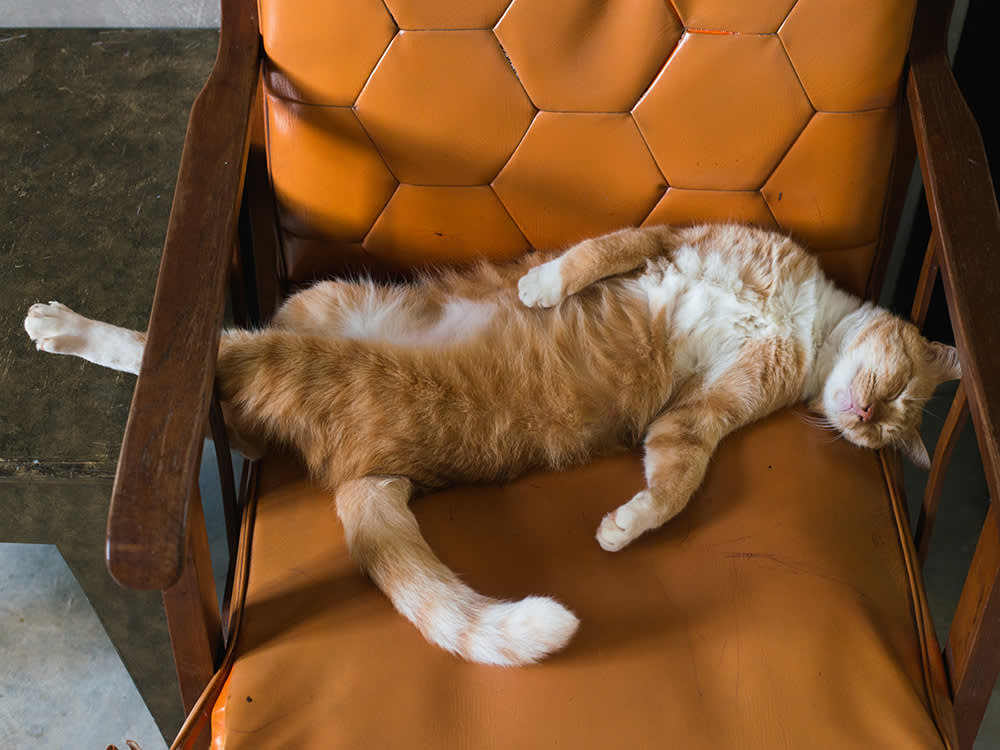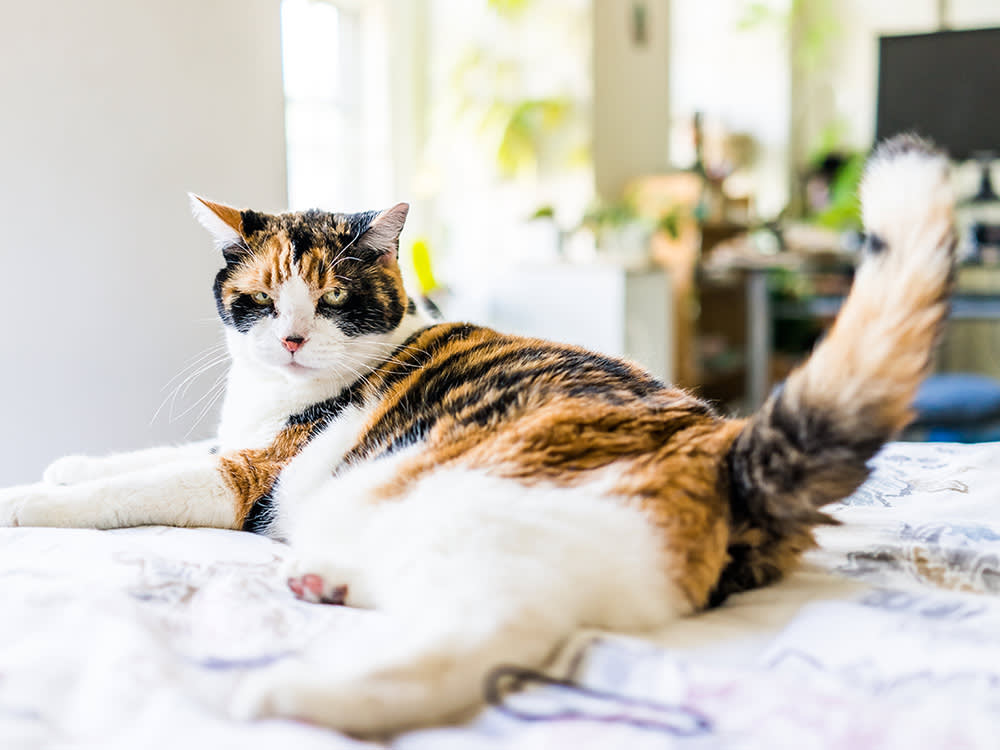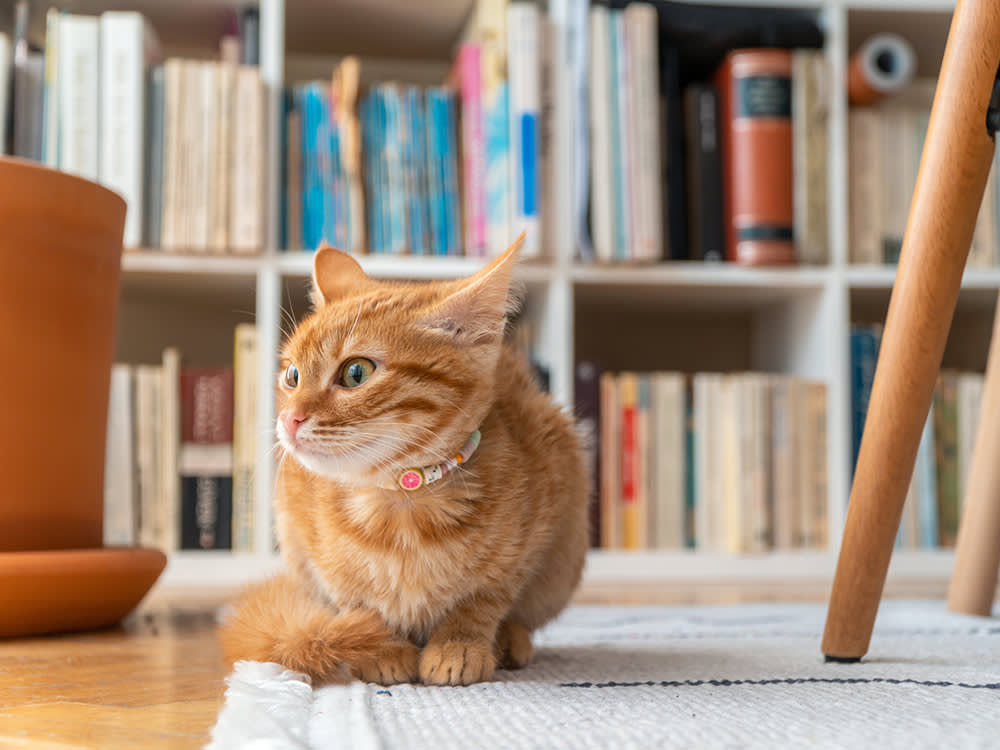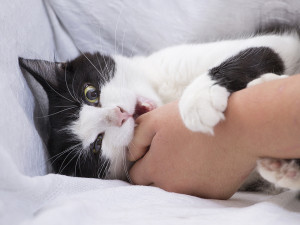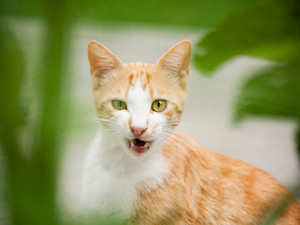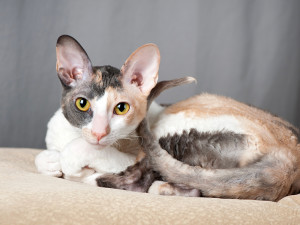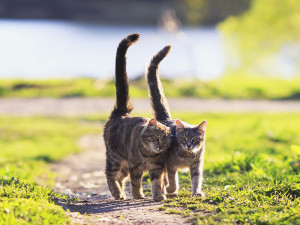How to Read Your Cat’s Poker Face
A guide to their not-so-secret tells.

share article
Cats have an air of mystery about them, but — as hard as they guard their feelings — there is a way to decipher what’s going on in their complex brains: body language. The variety of emotions they express can be decoded with careful attention to the messages their bodies are sending.
Here are some easy ways to suss out your cat’s little tells so that they might not always be the ones who win the constant game of poker that is cat parenthood.
Happy and Relaxed
Cats who are relaxed and happy look entirely different than aggressive cats. They are likely to have a flat back, their head held high, soft lips, and their ears up. Their tail may hang down with an upward bend at the tip or be held up in an erect position with a curve at the top so it resembles a question mark.
Cats in this positive emotional state often knead with their paws and have their whiskers forward. They might be in a relaxed posture such as lying on their side, or have their paws tucked in with their wrists sticking out. Happy cats often purr, though sometimes cats purr for other reasons, so it’s not a reliable way to identify a contented cat.
Here are some signs to look out for when your cat deigns to grace you with their presence.
Aggressive
The Halloween cat of holiday decoration fame is not a friendly feline. The cat with an arched back, fur sticking out, puffy tail looking over twice its usual size, mouth open in a hiss, and ears flat back is at risk of behaving aggressively, no matter if its color is the typical spooky black.
Additional cues that a cat may behave aggressively include: dilated pupils, squinty eyes at a deep angle, nearly-closed nostrils, whiskers out to the side, and a tail quickly swishing back and forth. Some aggressive cats have a wrinkle above the nose because they are pulling up their nose and top lip. Vocalizations typically become louder as the cat becomes more upset.
Playful
A cat must feel comfortable in order to play, yet playful cats look and act quite differently than those who are relaxed and serene. A playful cat’s behavior will generally be bouncy, erratic, exaggerated, and sometimes involve putting the body in a vulnerable position, perhaps by rolling on their back. Although those aspects of their body language and behavior are distinctly playful, in other ways, playful cats resemble aggressive ones. There’s a reason for that: Play often mimics more serious types of behavior, such as predation or fighting.
Playful cats may appear to act aggressivelyopens in a new tab, but it’s all in good fun, and no harm is intended and none should be inflicted. Playful cats may jump on or ambush playmates, and they may roll around together. They swat, stalk, chase or pounce on toys or other moving objects, but they do not growl when playing. Whatever they are doing, their bodies are relaxed, their movements are fluid, and their ears and tails are generally up — but their fur is not.
Annoyed or Irritated
A cat who is irritated will likely have squinty eyes that are angled down. Their ears will be out to the side or flat back and lower than the dome of their head. Their lips are tense and turned down at the sides. When annoyed, cats will often have wrinkles on the bridge of their nose. One of the clearest signs of annoyance or irritation in a cat is a thumping tail. That means that the cat is lying down so the tail is on the ground and then the cat is repeatedly lifting it off the ground and bringing it back down to hit the floor.
Nervous or Fearful
A nervous or fearful cat tends to make their body appear small. It’s common for such cats to lower their body to the ground and curl up in a ball. Often, they tuck all body parts in close. That means they may curl their tail around their body and hold their ears outward and flat. Even their whiskers contain information about how they are feeling; they are often held low and flattened against the face.
The eyes of a frightened cat are rounded with big, wide-open pupils. Fearful cats often shift their body weight back with their head back and their hind legs crouched. They may freeze if nervous or afraid, and if they run away or hide, that’s an obvious clue.
Taking Away the Mystery
In summary: Your cat’s carefully guarded emotions have one very easy tell: their furry (or hairless) little bodies. To understand cats requires paying attention to when those bodies are doing the talking, which is actually, well, always.

Karen B. London, PhD, CAAB, CPDT-KA
Karen B. London, Ph.D., is a Certified Applied Animal Behaviorist and Certified Professional Dog Trainer who specializes in working with dogs with serious behavioral issues, including aggression, and has also trained other animals including cats, birds, snakes, and insects. She writes the animal column for the Arizona Daily Sun and is an Adjunct Professor in the Department of Biological Sciences at Northern Arizona University. She is the author of six books about training and behavior, including her most recent, Treat Everyone Like a Dog: How a Dog Trainer’s World View Can Improve Your Lifeopens in a new tab.
Related articles
![cat biting person's hand]() opens in a new tab
opens in a new tabWhy Does My Cat Bite Me?
Don’t live in fear of your feline overlord.
![A cat outside showing its bottom teeth.]() opens in a new tab
opens in a new tabWhat’s All the Cat Chatter About?
Scientists believe they could be mimicking the calls of their prey.
![Cornish Rex cat laying down on a pillow]() opens in a new tab
opens in a new tabThe Cat Breed-Behavior Connection
Which cats are more likely to have stranger danger? Bite the hand that feeds them? Do the zoomies? Scientists studied 5,700 pet cats and discovered some interesting traits.
![Two cats walking with their tails sticking straight up]() opens in a new tab
opens in a new tabCat Tail Meanings
Cats are enigmas. But their tail movements can reveal a lot about their moods.
![White and light brown cat laying down with eyes almost closed]() opens in a new tab
opens in a new tabStudy Says “Slow Blinking” at Your Cat Helps You Bond
A team of psychologists at the Universities of Sussex and Portsmouth have discovered the key to building a bond with cats.
